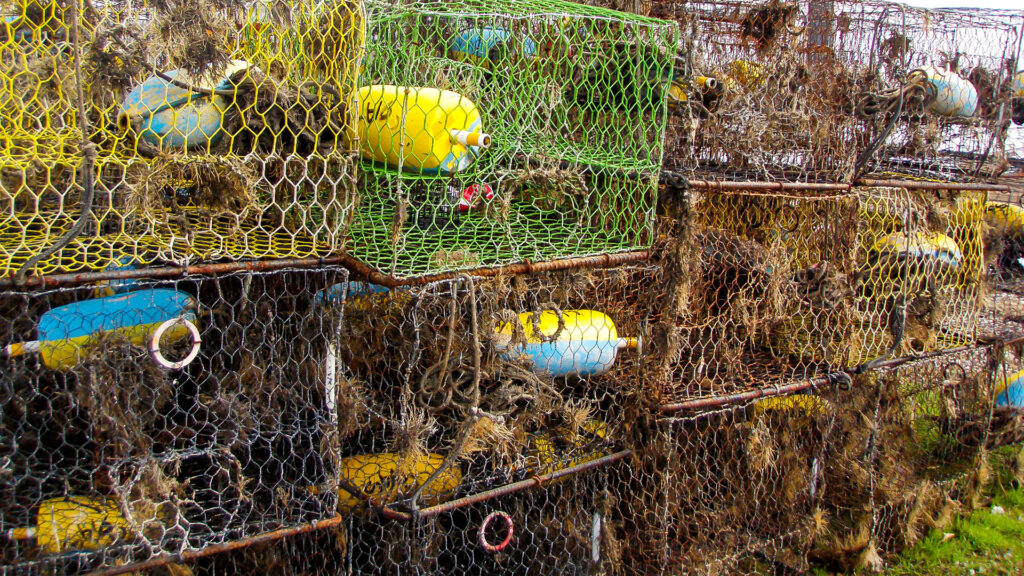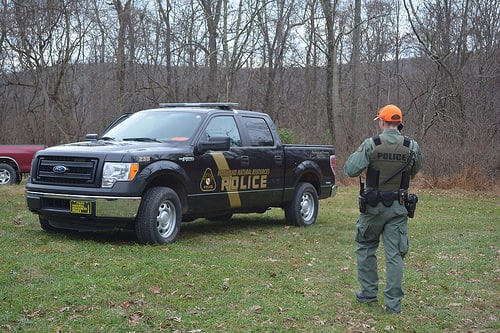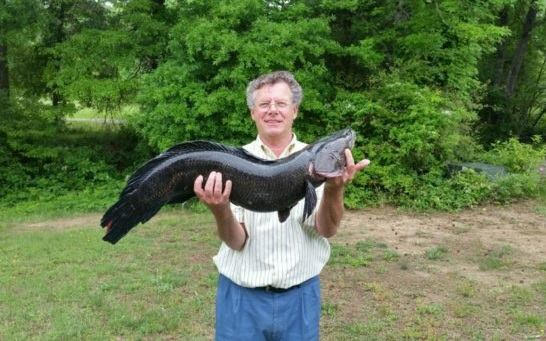The Virginia Institute of Marine Science (VIMS) and William and Mary’s Coastal Sciences school are leading the charge nationwide to clean up discarded fishing gear and “ghost pots” from U.S. waterways.
William & Mary’s Batten School and VIMS, administrators of the National Fishing Trap Removal, Assessment, and Prevention (TRAP) Program, has awarded $1.4 million to fund 11 projects to retrieve derelict lobster and crab traps in 2025. This initial round supports projects in California, Connecticut, Delaware, Florida, Louisiana, Maine, Maryland, New York, Washington and the Pacific Island State of Palau, as well as ongoing efforts by the Virginia Marine Debris Program.
In 2023, using funds from the Bipartisan Infrastructure Law, the National Oceanic and Atmospheric Administration’s (NOAA) Marine Debris Program awarded an $8 million, four-year competitive grant to the Batten School & VIMS to administer the TRAP program. One important feature of the project will be standardizing data collection practices and establishing a national database to evaluate the environmental and economic impacts of these projects.
“This is a special program because it allows local communities to tackle the issues that impact their environments and livelihoods the most, all under the same overarching goal,” said Kirk Havens, who directs the Center for Coastal Resources Management at VIMS. “The Batten School & VIMS is uniquely positioned to lead these efforts thanks to our nearly two decades of experience tackling this issue in the Chesapeake Bay.”
Lost, abandoned, discarded fishing equipment can harm ecosystems and economies by trapping and killing animals, damaging marine habitat, and competing with actively fished gear. After the crab disaster declaration in 2008, VIMS and the Virginia Marine Resources Commission worked with local watermen to begin the Virginia Marine Debris Removal Program, which ultimately led to the removal of more than 34,000 derelict crab pots between 2008 and 2014.
The NOAA Marine Debris Program supported that research. A 2016 study estimated removal efforts over the six-year period in Virginia and Maryland increased blue crab harvests in the Chesapeake Bay by 38 million pounds, putting an extra $33.5 million into the pockets of local watermen. An additional 2016 report revealed that removing just 10% of derelict crab pots and lobster traps on a global basis could increase landings by 293,929 metric tons—a yearly value of $831 million.
Here on the Chesapeake, the Batten School & VIMS received $152,669 to continue the Virginia Marine Debris Removal Program, employing local watermen. In Maryland, the Oyster Recovery Partnership received $134,226 to fund the removal of derelict pots from Anne Arundel County waters. It, too, builds on two decades of successful derelict trap removal projects to benefit watermen and improve local waterways.
This year’s TRAP projects must submit standardized data on their progress to the Policy Innovation Lab, a partnership between the Batten School & VIMS and the University of Georgia Carl Vinson Institute of Government. The lab’s analysis of this broad dataset will help to prevent trap loss and improve programs to remove them.
Later in the spring, the Batten School & VIMS will solicit proposals for TRAP funding in 2026. For more information, visit trapprogram.org. For more on TRAP, including a list of the 2025 projects that received funding, click here.




